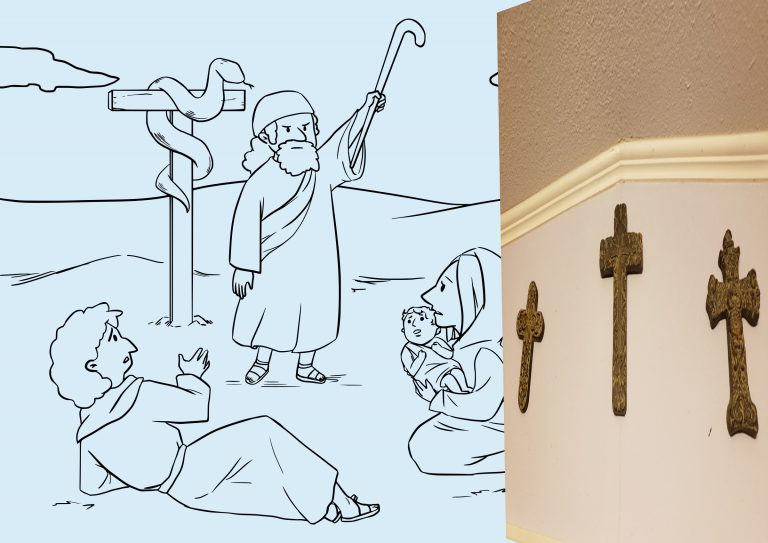A Fruitful Faith
As I mentioned in a prior post on salvation, I plan to make a few more comments over the next few months filling out my views. In support of some future posts, I want to post an extract from a previous essay, A Fruitful Faith. You can read the remainder of that essay by following the link, but this essay describes the pattern, to which I will refer multiple times in future posts.
There are many views in Christianity on the details of salvation and the various terms, events or processes that go into it. I would like to survey some Biblical material which I believe suggests that one always becomes right with God through a relationship mediated by faith, i.e. by the grace of God, but that the faith must always be a faith that bears fruit. No simple set of words, no transaction, no non-productive faith will do. A few of the texts that I will quote go a little farther than that, but I am interested right now in a broad survey rather than the details.
Let me clarify some terminology. The word “salvation” can refer in scripture to redeeming someone from the rule of evil, to a process of spiritual healing and growth, and also to the final entry into the kingdom of God. Looking at texts from this perspective would constitute another essay. I will simply assume it here. Second, I will use the term “Old Testament” for the Hebrew scriptures for the most part, because I am looking at that body of literature from a primarily Christian point of view.
I will proceed in seven parts (this extract includes only the first section):
- The original pattern from creation through the end of the flood
- The pattern of the Exodus
- Messianic prophecy and the new covenant
- Jesus
- Paul and fruit
- General Epistles
- Revelation and the coming kingdom
(Since each of these is a rather large topic I’m simply going to outline the main points. This is a topic in which I believe one can say that the notion of salvation by a non-producing faith is unscriptural because it goes against the grain of all of scripture.)
1. The pattern
The “sin” pattern starts in Genesis 3 or 4, but can be most clearly seen, I believe, in the contrast between Genesis 1:31 (God saw everything that he had made, and behold it was very good!) and Genesis 6:5, (God saw . . . that the pattern of the intentions of his [man’s] heart was only evil continually.) Here we see the simple statement of the state of the world. It is good to recall that we are reading a story here with the moral points made through narrative. If we grant the situation as described in the story, the world is already in serious trouble before God brings on the flood. The focus in this story from the teller’s point of view is not the destruction of the rest of the world, but rather the saving of the eight people.
Note here that the problem is not that everyone is running around bothered by guilt. It is also not that they are afraid of death and of hell fire. Rather it is that the entire tendency of their thinking is evil. Thus an atonement that simply removed guilt would not meet the need. An atonement that left their thinking in the same state in which it was before would not be a response to the problem indicated.
This establishes the pattern that I believe is frequently seen in scripture, in particular in narrative form, which follows through all discussions of salvation–grace comes before law and instruction. Let’s look at that pattern as it occurs following the flood. Recall that for the eight people described here, they have just survived a harrowing experience–they have experienced a form of salvation from the situation.
1. God blessed Noah and his sons, and said to them, “Be fruitful and multiply, and fill the earth.
2. The fear and dread of you shall rest on every animal of the earth, and on every bird of the air, on everything that creeps on the ground, and on all the fish of the sea; into your hand they are delivered.
3. Every moving thing that lives shall be food for you; and just as I gave you the green plants, I give you everything.
4. Only, you shall not eat flesh with its life, that is, its blood.
5. For your own lifeblood I will surely require a reckoning: from every animal I will require it and from human beings, each one for the blood of another, I will require a reckoning for human life.
6. Whoever sheds the blood of a human,
by a human shall that person’s blood be shed;
for in his own image
God made humankind.
7. And you, be fruitful and multiply, abound on the earth and multiply in it”
(Genesis 9:1-7 NRSV).
First, there is a blessing which is the result of a rescue, then there is instruction. We will see the pattern repeated further on in the same chapter.
The same pattern occurs with Abraham who is called out without any particular request of good action recorded on his part, but who simply believes God. But his belief also results in action (Genesis 12:1-4; Genesis 15:6). One might even say that, beyond simply accepting that what God said was true, he put it into action–he put his trust in God. God’s act of rescue occurs first, followed by God’s promise of blessing, followed by the obedience of the person.
